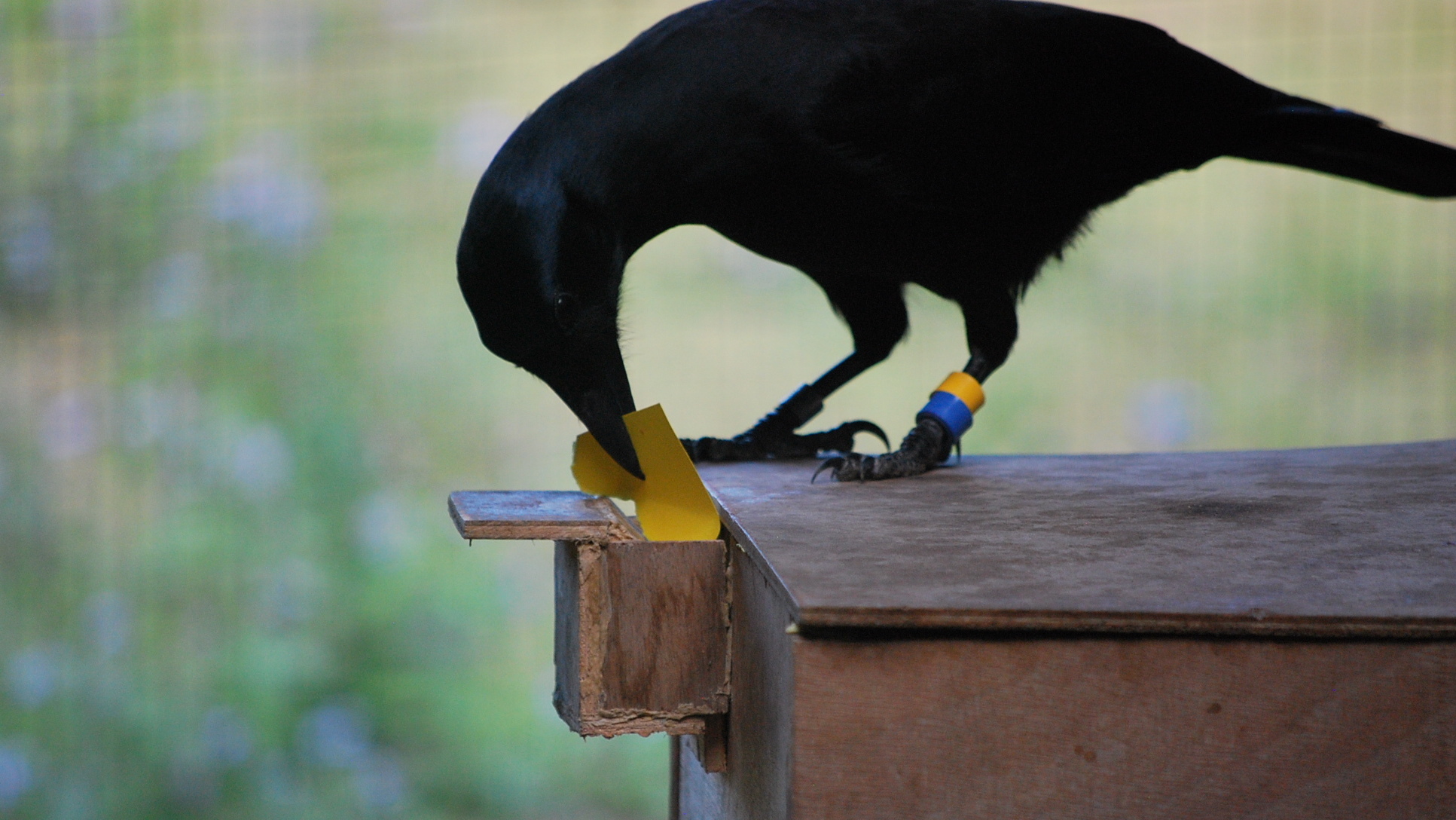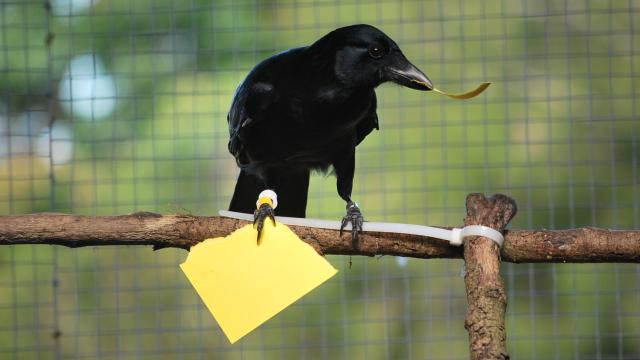A New Caledonian crow building a tool card.Photo: Sarah Jelbert
New research shows that crows can recreate tools from memory, a capacity previously thought impossible for birds.
Crows are super smart — we knew that already. In addition to research published today in Scientific Reports suggests this ability, at least among New Caledonian crows (a particularly intelligent species of corvid), is more sophisticated than we thought, and that these birds are able to construct tools from memory.
In human societies, cultural evolution and tool building is an iterative process, whereby social traditions improve over time due to teaching, language, and imitation. But among New Caledonian crows, it’s not clear if their tool-making skills are the result of imitation, or an ability acquired through the passing down of cultural traditions. A going hypothesis is that tool designs are in fact culturally transmitted, and that it’s done through a process known as “mental template matching.”
“Under the mental template matching hypothesis, New Caledonian crow tool designs could be passed on to subsequent generations if an individual used or observed the products of tool manufacture (such as their parents’ tools), formed a mental template of this type of tool design (a mental representation of some or all of the tool’s properties), and then reproduced this template in their own manufacture,” explain the authors in the new study.

A New Caledonian crow inserts a card tool into food dispenser. Photo: Sarah Jelbert
Researchers Russell Grey from the University of Auckland, New Zealand, Sarah Jelbert from the University of Cambridge, along with colleagues from several other institutions, conducted an experiment that now provides the first evidence in support of this assertion.
The researchers trained eight crows to drop bits of paper into a vending machine, which the birds did to receive food rewards. The crows later learned that only cards of a specific size, either large pieces measuring 40 x 60 mm or small pieces measuring 15 x 25 mm, were rewarded. Once the crows were trained to recognise which sizes of paper tools resulted in a food reward, the scientists took all paper pieces away and replaced them with a single large sheet of paper that didn’t fit into the dispenser. Incredibly, the birds tore up the large card to create pieces that matched the size of the paper they previously used to earn rewards. The researchers called it “manufacture by subtraction.”
Importantly, the birds did not have visual access to any of the previous scraps of paper. The experiment suggests the birds held a mental image of the desired tool in their minds, which they used to construct the new tool. It also means some species of birds may have the ability to improve tools over time (something not proven in the study, but alluded to as a possibility), which they could do by recreating and then adjusting other designs they have seen and memorized. That’s an important consideration, because the ability to modify items from memory is typically associated with tool-making cultures, such as humans and some nonhuman primates.
Edward A. Wasserman, an experimental psychologist and brain scientist at the University of Iowa who wasn’t involved with the new research, says the study is an important addition to our understanding of avian intelligence, and that the conclusions were “clear and compelling.” That said, he wasn’t surprised by the results.
“The prime limitation on our appreciation of avian intelligence is the lack of creativity in our own experimental methods,” Wasserman told Gizmodo. “Birds keep looking smarter as we conduct more ambitious and assiduous experiments.”
Wasserman was also keen to point out that crows aren’t the only intelligent birds.
“Pigeons, parrots, and jays have all been found to exhibit remarkable abilities to learn and remember a wealth of challenging tasks,” he said. “This evidence has come from both naturalistic observations and controlled laboratory experiments. The fact that the last common ancestor of birds and mammals lived 300 million years ago raises a profound question: was that ancestral species also smart or did intelligence evolve independently? That will be a hard question to answer.”
In the meantime, let’s be sure to admire the intelligence of our fine feathered friends, and finally acknowledge that being called a “bird brain” is actually a compliment.
